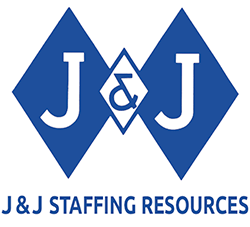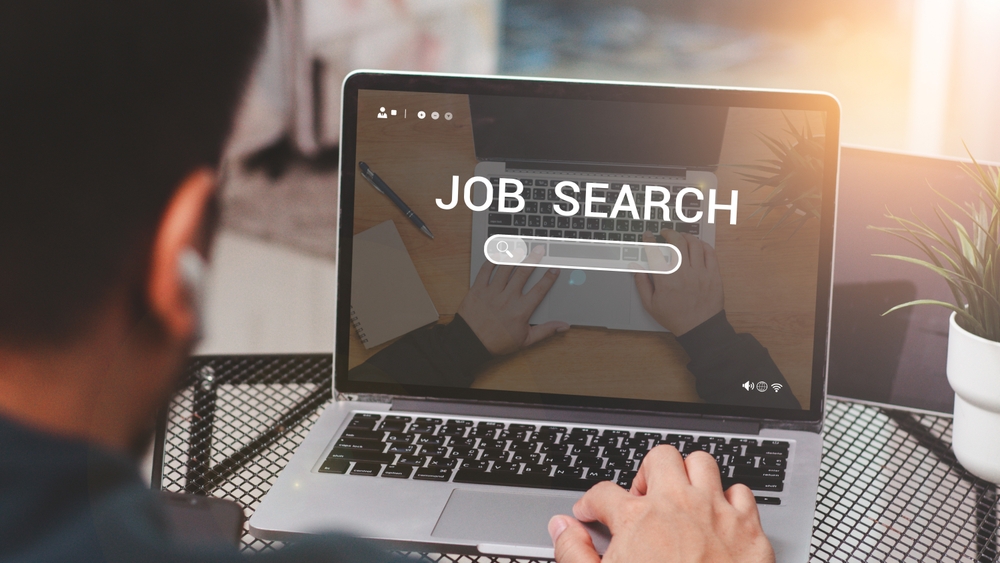In this Article, You Will:
- Learn how to get started with a corporate job search.
- Dive deeper into the application process for these companies.
- Discover ways that you can bolster your resume, increasing your chances of being noticed.
Working for mid-sized or large companies often comes with an appealing wish list of benefits: stability, strong brand recognition, extensive benefits packages, and clear, defined career paths.
But landing one of these desirable corporate jobs can feel like a different league. The application process is often more complex, more structured, and more competitive than at smaller businesses. It’s easy to feel like just another number.
So, how do you successfully navigate the corporate job application process and get your foot in the door? This guide will break down exactly how to apply for job postings at mid-to-large-sized companies and help you land one of those large company jobs.
Starting Your Professional Job Search
Before you can perfect your application, you have to know where to look. A successful professional job search for large company jobs means using a targeted, multi-channel strategy instead of just applying everywhere.
How to Find a Corporate Job
When you’re looking for opportunities at this level, your search should be focused. Here are the top three places to look:
- Company Career Pages: The most direct method is to visit the career pages of the specific companies you admire. Applying directly on their site is often the preferred method for large companies, as it feeds your application right into their internal system.
- LinkedIn & Niche Job Boards: Use major job boards like LinkedIn, but be smart about it. Don’t just search for a job title. Use the advanced search filters to narrow your results by company size, industry, and location to find relevant opportunities that match your goals.
- Staffing Agencies (like J & J Staffing): This is our specialty and a powerful tool for candidates. Recruiters at agencies like J & J Staffing often have an “inside track” and established, long-term relationships with hiring managers at large companies. We can guide your Professional job search, offer critical advice on your application, and advocate for you directly, significantly increasing your chances of getting noticed.
How to Apply for Corporate Jobs
Once you’ve found the perfect job posting, the application itself is the next major hurdle. When you’re dealing with large companies, you can’t just send a generic resume and hope for the best. You need a precise, targeted strategy. This is the most critical component of how to apply for corporate jobs.
Decoding the Job Description
First, treat the job description as your roadmap. Job postings at large companies are rarely vague; they are often written by a committee and list very specific requirements.
Read it at least twice. The first time, just get a feel for the role. The second time, highlight the key skills (e.g., “project management,” “Salesforce,” “data analysis”), qualifications (“5+ years of experience,” “Bachelor’s degree”), and “soft skills” (“team-oriented,” “strong communicator”). These are the exact keywords your application will be scanned for.
Tailoring Your Resume for the ATS (Applicant Tracking System)
Here’s the biggest secret of the corporate job application process: you have to get past the robot first.
Most mid-to-large companies use an Applicant Tracking System (ATS). This is software that receives, scans, and ranks every application. Because these companies receive hundreds (sometimes thousands) of applications for one role, the ATS is the first filter. It scans your resume for the keywords from the job description and scores you.
A generic resume will get filtered out before a human ever sees it.
To get past the ATS, you must tailor your resume. Take those keywords you highlighted in the job description and mirror them in your resume’s “Skills” and “Experience” sections (as long as you genuinely have that experience, of course). This is the single most important step for how to apply for corporate jobs successfully.
Writing a Professional Cover Letter
Don’t skip the cover letter, even if the application says it’s optional. This is your chance to show you’re a human who understands the corporate environment.
A good cover letter doesn’t just repeat your resume. It connects the dots for the hiring manager. Use a simple formula: “I see you’re looking for [Requirement from Job Description]. In my role at [Previous Job], I successfully [Specific accomplishment that proves you have that skill].”
Keep it professional, concise, and focused on how you can solve their problems. This demonstrates you’re a proactive professional, which is exactly what large companies want.
Beyond the Resume – Show Them You’re Ready
Your work isn’t over once you hit “submit.” The final piece demonstrates the professionalism and persistence that these companies value. This shows you understand how to work in a corporate job before you even get an offer.
Networking & Following Up
It’s common to send an application and hear nothing back—the dreaded “black hole.” Sometimes, this is where a bit of professional networking helps. If you know someone at the company, a polite note letting them know you’ve applied can be helpful.
If you don’t have a connection, a polite follow-up email to the recruiter or hiring manager after one to two weeks is appropriate. Keep it simple and professional; this small step can show your continued interest and set you apart during your Professional job search.
Preparing for the Multi-Stage Interview
One of the biggest differences with corporate jobs is the interview process. Be prepared for a multi-stage marathon, not a sprint. It often involves:
- An initial HR screening call.
- An interview with the direct hiring manager.
- A technical interview or assessment.
- A panel interview with multiple team members.
Don’t be intimidated by this. It’s standard procedure. By showing up prepared, professional, and patient for each step, you’re proving you have the endurance and poise needed to thrive in a structured corporate environment.
We’re Your Partner in a Professional Job Search
A successful professional job search for large company jobs requires more than just a good resume. It requires a targeted strategy, a tailored application that can beat the ATS, and the persistence to see the process through.
You don’t have to navigate the search for corporate jobs alone. At J & J Staffing, we specialize in helping talented candidates like you connect with the region’s top employers. We can be your expert partner, guiding you through every step.
Ready to start your search? Browse our current openings or contact a J & J Staffing recruiter today to learn more about how to find a corporate job that’s right for you.
Staffing Services In Greater Philadelphia
J & J Staffing Resources is a professional staffing agency that connects local businesses to job seekers throughout the Greater Philadelphia area, including Pennsylvania, New Jersey, and Delaware.
We bring over 45 years of expertise in office, industrial, technical, and professional staffing placements as well as payroll management, and offer a wide range of services for both employers and job seekers.
Need help? J & J Staffing has offices in Newark, Bridgeport, Woodbury, Cherry Hill, Ewing, Princeton, Langhorne, and Horsham. Visit your local J & J staffing center or get started below.




